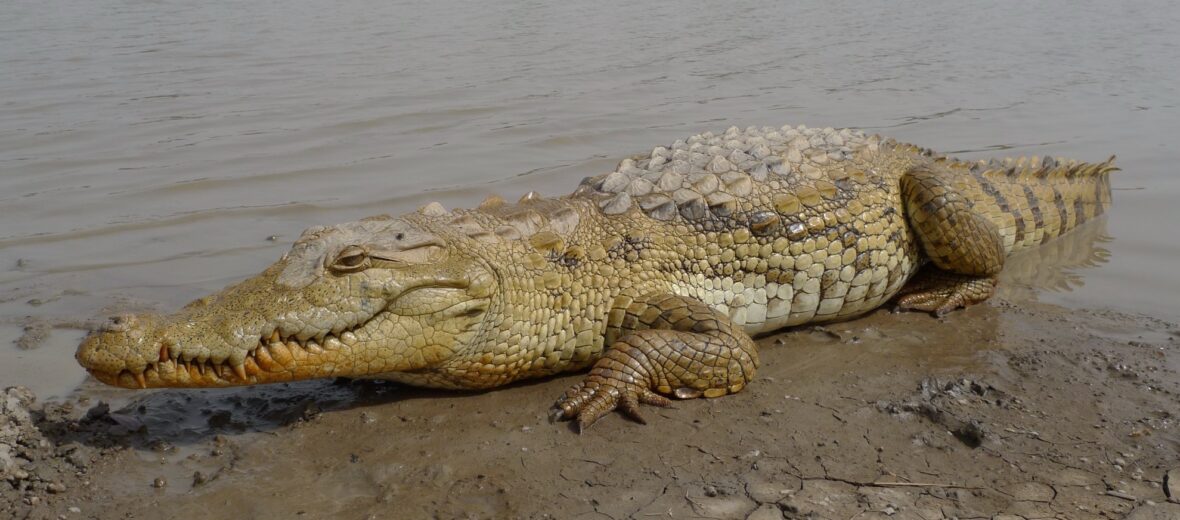
The West African crocodile, aka desert crocodile or sacred crocodile, hails from West and Central Africa. These crocs tend to be smaller and less defensive than their Nile crocodile cousins. These crocodiles prefer wetlands & lagoons within forested regions, river basins, mangrove swamps, and can even handle brackish water. Some specimens even live in the Sahara-Sahel and hide in burrows and caves to stay cool.
First the Stats…
Scientific name: Crocodylus suchus
Weight: Up to 1,650 lbs.
Length: Up to 13 feet
Lifespan: Up to 45 years
Now on to the Facts!
1.) West African crocodiles are nocturnal (active at night).
2.) Like other crocs, these critters are ambush predators that lay in wait for a meal to come close enough. Then they strike!
3.) These crocodiles prey on reptiles, fish, birds, and mammals.
4.) Although solitary, they will come together during the rainy season.
5.) A group of crocodiles is called a congregation, float, bask, or nest.
But wait, there’s more on the West African crocodile!
6.) Females lay a clutch of eggs, each season, of up to 60. The eggs hatch in about 100 days.
7.) As is the case with all crocodillians, ambient temperature affects gender outcome. 86°F or less and they’re born female. 88°F and both sexes are hatched. 91°F yields males.
Did you know…?
Crocodiles can go through up to 8,000 teeth in their lifetime! They can also swim up to 20 mph!
8.) When the hatchlings are ready to emerge from their egg, they begin to call to mom. This signals her to help excavate the eggs from the earthen nest, pick up the eggs in her mouth, and gently help to open the eggs with her teeth.
9.) Once born, the hatchlings are carried, by mom’s mouth, to the water. Once they are a little larger, they will join a crèche of other juvenile crocs, watched over by the females.
10.) In Mauritania people live in peace with these crocodiles. They have even been known to swim in the same waters, unharmed!
But wait, there’s still more on the West African crocodile!
11.) Mauritanians believe that if the crocodiles disappear, so will the water. So they protect and look after them.
12.) Ancient Egyptians worshiped Sobek, the crocodile-god likened to fertility and protection. They even mummified crocodiles.
Now a Short West African Crocodile Video!
Be sure to share & comment below! Also, check out the Critter Science YouTube channel. Videos added frequently!
Want to suggest a critter for me to write about? Let me know here.



